Cuenca, Ecuador
TUMI E-Mobility supported the City of Cuenca in developing an integrated E-Mobility Plan to contribute to the city’s vision of reducing its transport related emissions and increase sustainable mobility.
TUMI E-Mobility supported the City of Cuenca in developing an integrated E-Mobility Plan to contribute to the city’s vision of reducing its transport related emissions and increase sustainable mobility.

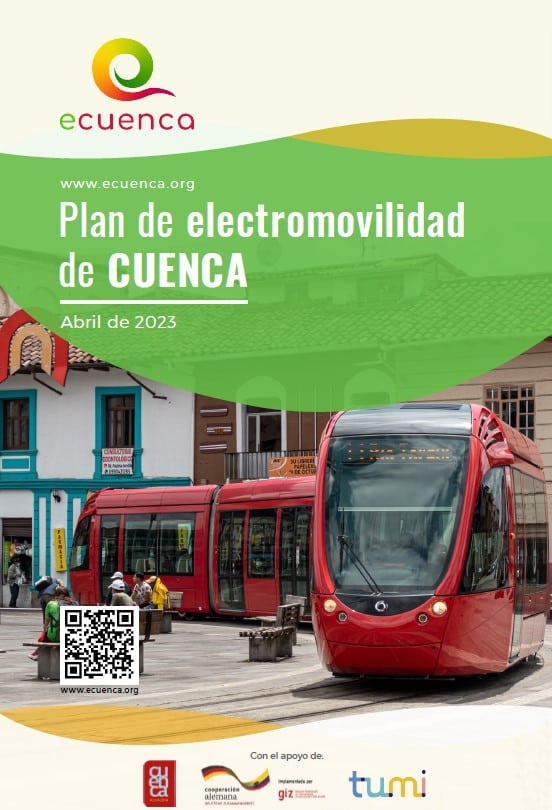
After 18 months of a participatory and collaborative process the city of Cuenca, with the support of TUMI, through an innovative process and methodology, has developed its own Electromobility Plan called “eCuenca”. The city capitalized on its new capacities and acquired knowledge, and used the environment of collaboration, participation, and co-creation generated with the project stakeholders.

Cuenca is a medium-sized city in Ecuador with a population of approximately 600,000 inhabitants. The city is third in importance in the country and is a UNESCO World Heritage Site because of its historical buildings. Its mobility planning has developed around the private car. As a result, the city with owns the highest rate of vehicles per capita in the country. Cuenca’s road fleet majorly runs on fossil fuels, representing 85 percent of the total greenhouse gas (GHG) emissions generated by the city.
However, in the last decade Cuenca is making efforts to reverse this trend and is working towards a sustainable mobility. Some actions are being implemented: (i) the Mobility and Public Spaces Plan (PMEP) as a guiding mobility policy; and (ii) improving public transport level of service through a tramway system and the first modern fare payment system of the country (iii) Likewise, is the first city to implement a modern bike sharing system.
Under TUMI E-Mobility support Cuenca through an innovative process and methodology was the one of the pilot cities to develop an E-mobility road map to decarbonize its road transport to be a reference in the fight against climate change in the region.

You are currently viewing a placeholder content from Default. To access the actual content, click the button below. Please note that doing so will share data with third-party providers.
More Information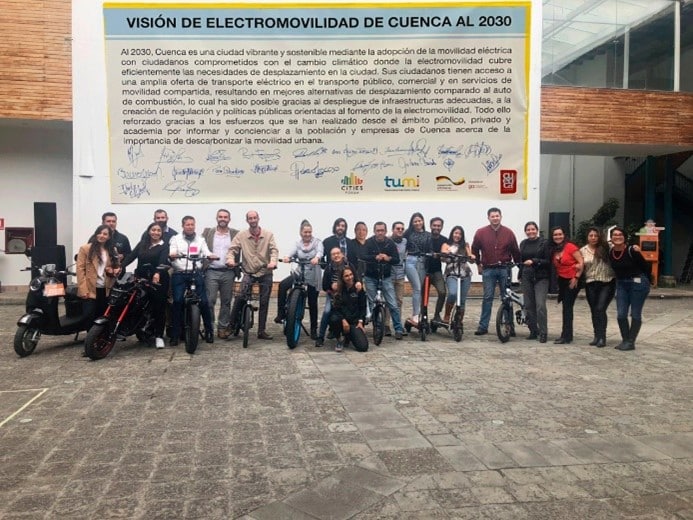
By 2030 the city of Cuenca is a vibrant and sustainable city that has achieved these characteristics through the adoption of electromobility, with citizens committed to fighting climate change, where electromobility efficiently meets the city’s travel needs. Its citizens have access to a wide offer of electric transport, public transport, commercial transport and shared mobility services, which result in better ride-sharing alternatives to the combustion car, which has been possible thanks to the deployment of adequate infrastructure, the creation of regulation and public policies oriented to the promotion of electromobility. All this has been reinforced thanks to the efforts made by the public, private and academic sectors to inform and raise awareness among the population and businesses in Cuenca about the importance of decarbonising urban mobility.
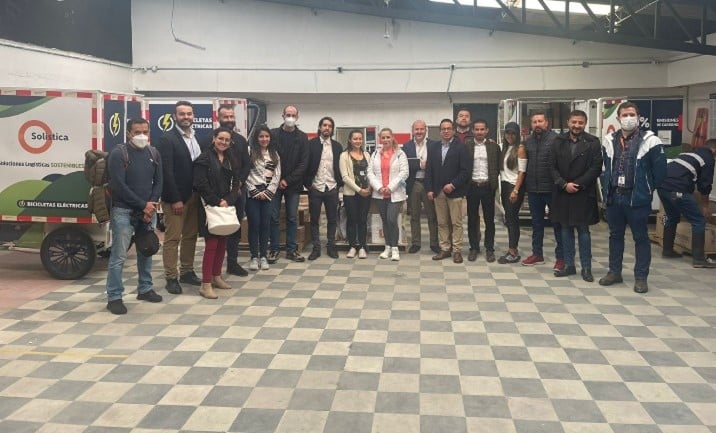
In the framework of the pilot project funded and led by TUMI E-Mobility the city of Cuenca visited Bogota and Medellin to learn experiences on E-buses implementation with the visit at depot where 400 e-buses managed by @greenmoviltrans. Likewise, the city learned about the last mile logistics with e-tricycles by @Solistica_3PL
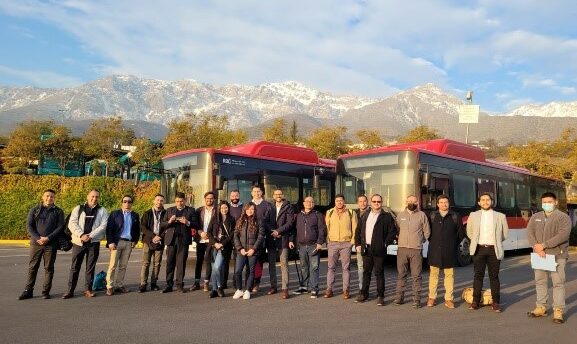
As part of the actions of the E-mobility plan, Cuenca had the opportunity with a great team of professionals from important organizations of the city and Ecuador to learn from the process and experience in the adoption of electric buses and cabs in Santiago, Chile and enrich the development of Cuenca´s e-plan and its measures.
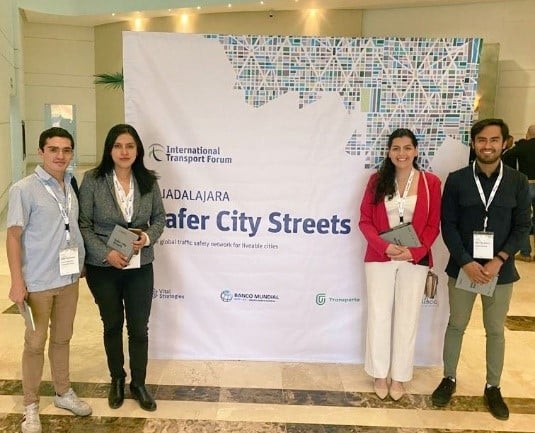
As a former TUMI pilot city Cuenca was part of the SaferCityStreets event organized by ITF at Guadalajara. The Municipality of Cuenca participated and learned how to make cities more liveable by the adoption of Sustainable Mobility.
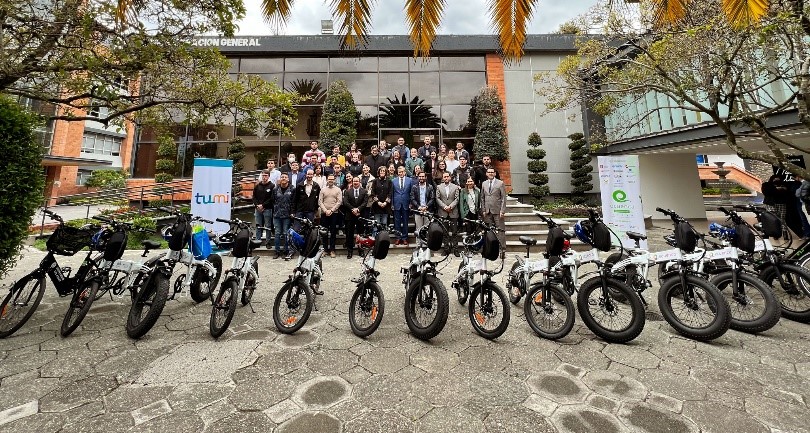
The city of Cuenca launched its e-bike pilot! With TUMI’s support, 12 e-bikes were delivered. They are used by organizations who currently use private vehicles for their daily activities. The e-bikes pilot objective was to understand the potential of e-bikes as an attractive mean of transport over private vehicle. The pilot also seeked to define the feasibility of incorporating e-bikes into Cuenca’s bike sharing system.
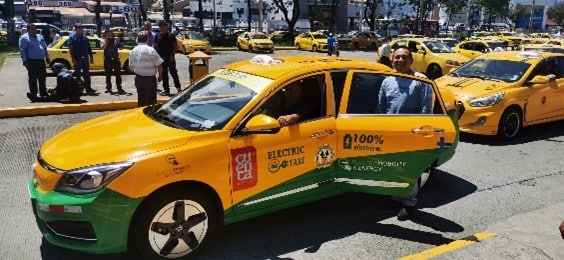
The first ever e-taxi in Cuenca! The objective of the pilot was that through the experience in operation of the e-taxi, to debunk existing misconceptions about the technology and to define the feasibility of decarbonizing these fleets from a financial analysis of total cost ownership (TCO).
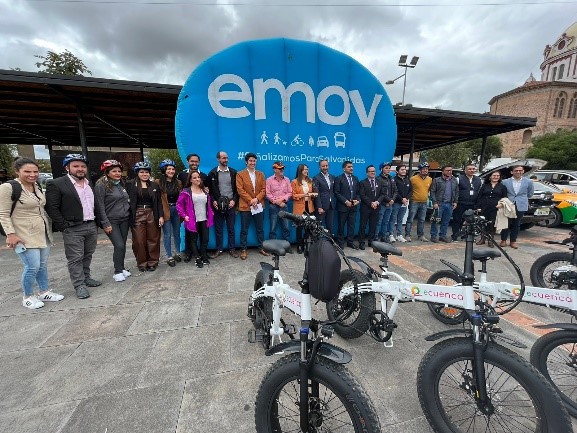
The municipality of Cuenca launched its first 15 electric patrols in conjunction with TUMI as part of the electromobility plan. In addition, a presentation of the progress of the pilots was made.
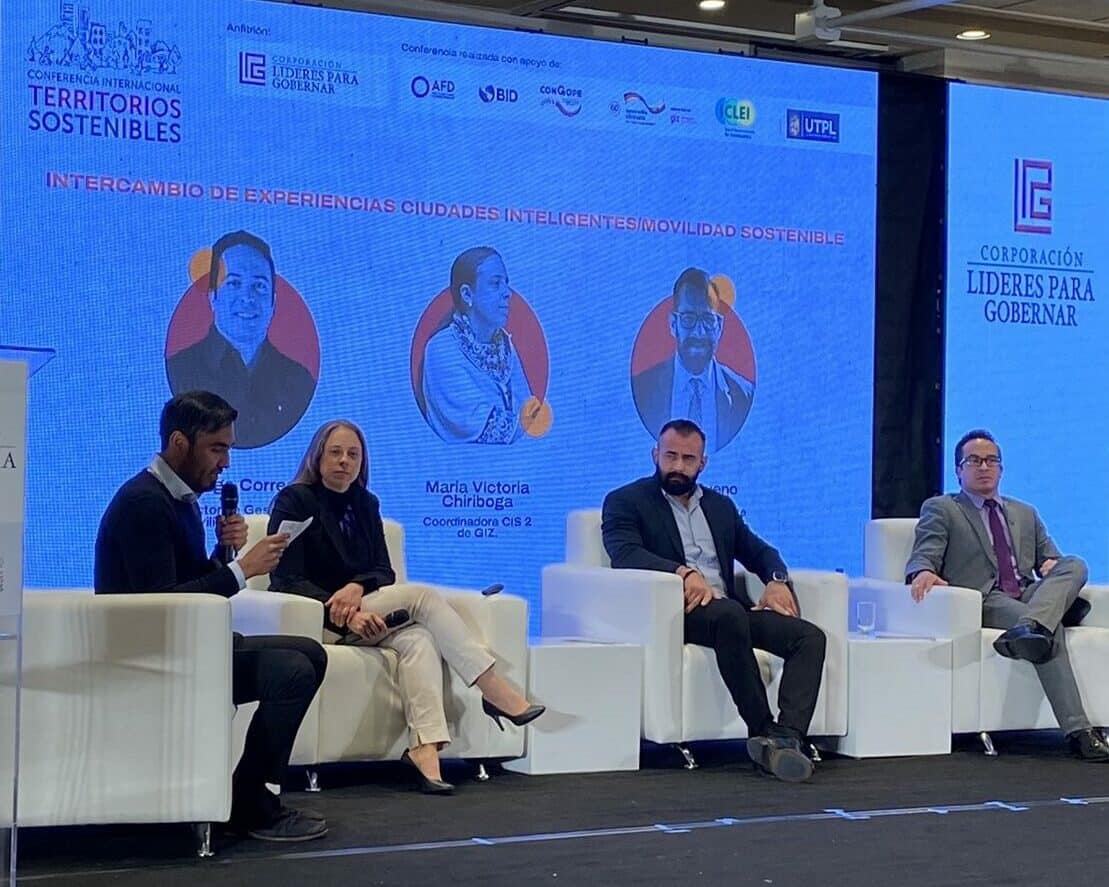
TUMI, Municipality of Cuenca and CitiesForum were invited by Lideres para Gobernar to share their experience of the project and inspire other cities of Ecuador towards the importance of decarbonizing road transport to mitigate climate change and improve live quality.
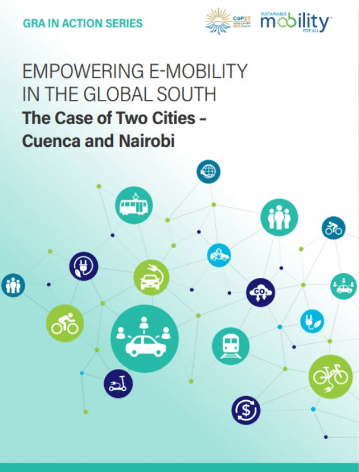
“EMPOWERING E-MOBILITY IN THE GLOBAL SOUTH The Case of Two Cities – Cuenca and Nairobi”. As part of the COP27, SuM4All has released Cuenca´s case study report. The report details how Cuenca is developing its road map to descabonize its road transport. The report identifies seven building blocks grouped in three action fields: vision, policy and implementation that enable successful implementation of public policies in the field of electric mobility.
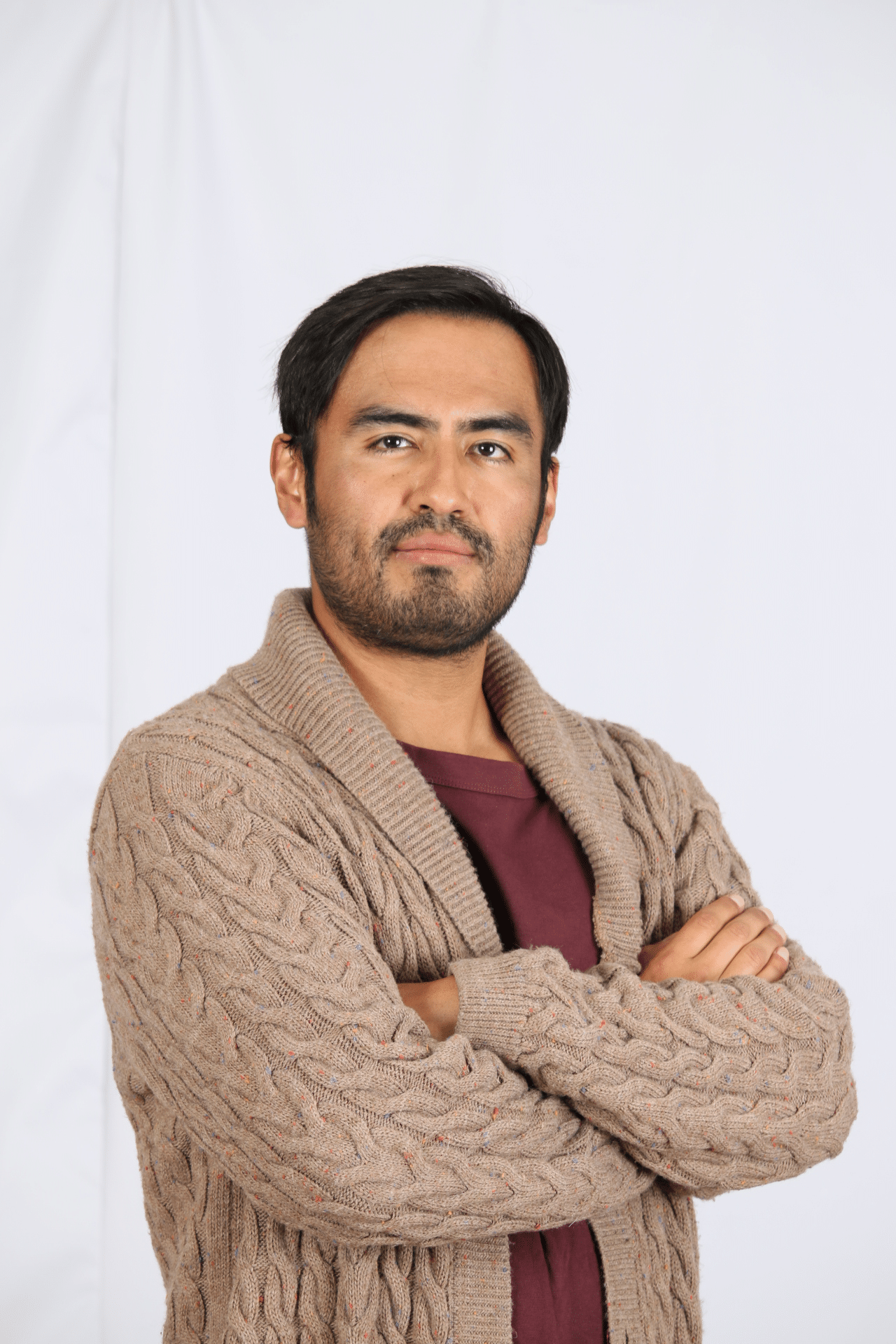
Adrian is an automotive mechanic engineer, specialized in transport Planning and Environment at University of Leeds joining the team in 2020. Previously he worked at the public sector in the National Transit Agency of Ecuador and as external consultant at world bank.
E-Mail Address:
info@transformative-mobility.orgYou need to load content from hCaptcha to submit the form. Please note that doing so will share data with third-party providers.
More InformationYou need to load content from reCAPTCHA to submit the form. Please note that doing so will share data with third-party providers.
More InformationYou are currently viewing a placeholder content from Turnstile. To access the actual content, click the button below. Please note that doing so will share data with third-party providers.
More Information